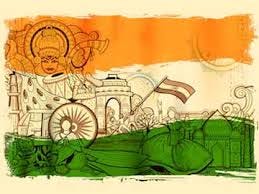
indian culture and arts
Indian culture is one of the oldest and most diverse in the world, with a rich history spanning over several millennia. India has been a cradle of civilization, a melting pot of cultures, and a land of great diversity. The culture of India is known for its colorful festivals, traditional customs, diverse cuisines, and rich heritage.
The roots of Indian culture can be traced back to the Indus Valley Civilization, one of the earliest civilizations in the world, which existed around 2500 BCE. Over the centuries, India has been invaded and ruled by various dynasties, including the Maurya, Gupta, Mughal, and British empires. Each of these empires left its own imprint on Indian culture, leading to a unique blend of traditions, religions, and customs.
One of the defining features of Indian culture is its diversity. India is a land of many religions, including Hinduism, Buddhism, Jainism, Islam, Christianity, and Sikhism. Each religion has its own set of customs and practices, adding to the rich cultural tapestry of India. For example, the festival of Diwali is celebrated by Hindus, Jains, and Sikhs, while Eid is celebrated by Muslims, and Christmas is celebrated by Christians.
Another defining aspect of Indian culture is its traditional customs and practices. These include the practice of arranged marriages, the use of henna for body decoration, the wearing of traditional clothing such as sarees and dhotis, and the practice of yoga and meditation. These customs and practices have been passed down from generation to generation and continue to play an important role in Indian society today.
Indian cuisine is another aspect of Indian culture that is famous all over the world. Indian food is known for its use of spices, herbs, and flavorful ingredients. Each region of India has its own distinct cuisine, with unique dishes and flavors. For example, North Indian cuisine is known for its rich curries, while South Indian cuisine is known for its use of coconut and seafood.
Indian culture is also famous for its colorful festivals, which are celebrated throughout the year. These festivals are a time of joy and celebration, where people come together to enjoy music, dance, and food. Some of the most famous festivals include Holi, Diwali, Navratri, and Eid.
In conclusion, Indian culture is a rich and diverse tapestry of traditions, customs, and practices. It is a testament to the country’s long and colorful history and has been shaped by a variety of influences over the centuries. From its colorful festivals to its traditional customs and practices, Indian culture continues to thrive and inspire people all over the world.

Comments
Post a Comment